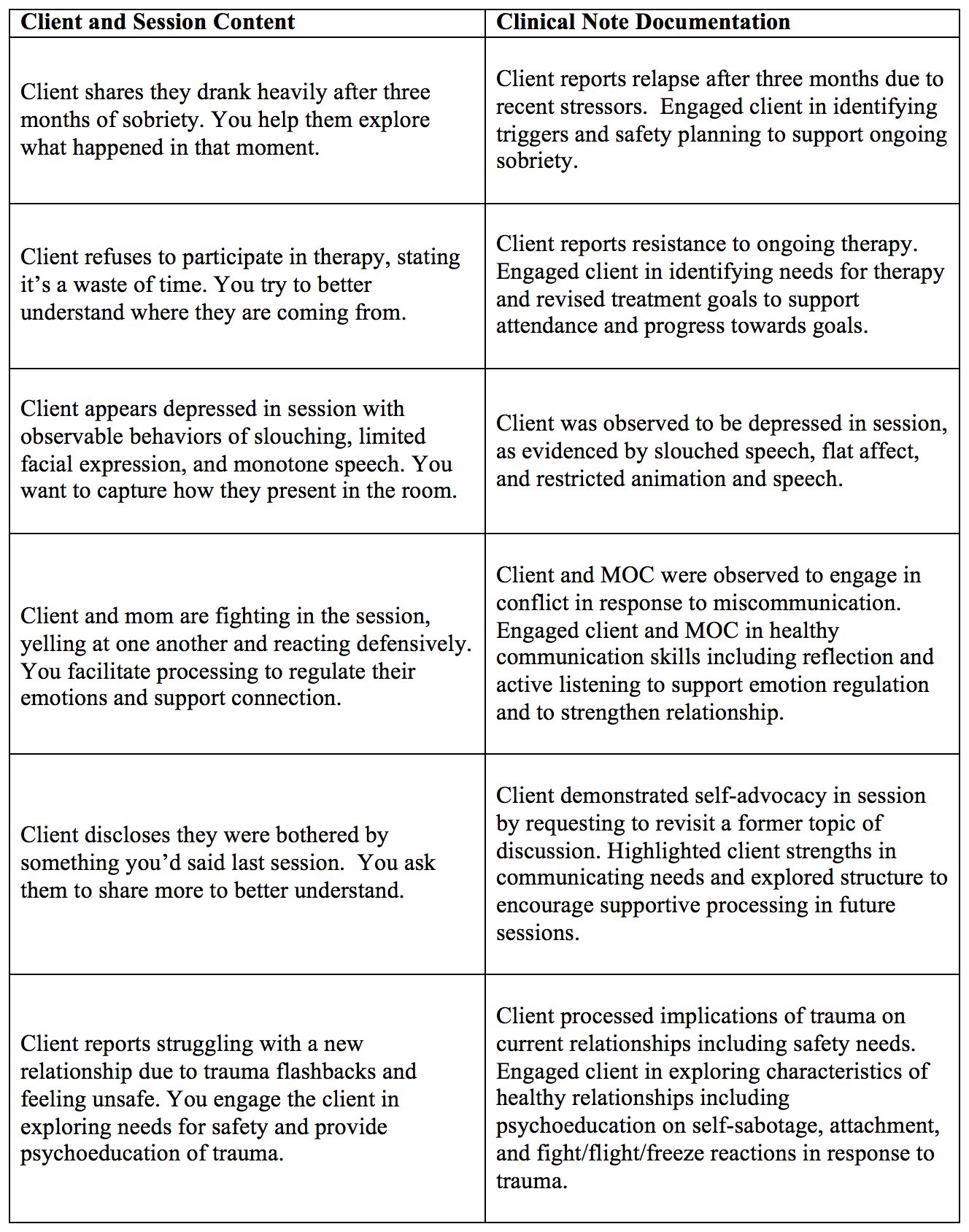“Do I have to do family therapy?”
Yep, that's such a common question I get from my adolescent clients at the start of therapy. Here are some other common questions and statements a therapist may receive in regards to parents and caregivers being a part of an adolescent's therapy process:
"So how much are you going to tell my parents?"
"I hate these family things; i just feel so awkward."
"Do I have to be in the room when you talk to my mom/dad/guardian?"
“I’ll talk to you, but I will not talk to my parents about this!”
“Why try, nothing is going to change!”
“They/she/he just doesn’t understand me.”
Do any of these sound familiar in your therapeutic work?
When reflecting on these common initial responses and questions about family therapy, it has been my professional experience that I see a clear pattern of fear, lack of trust and shame arise as barriers to adolescents getting their needs met by their caregivers. Additionally, many adolescents seem to have a common misunderstanding (and caregivers too) that family therapy is about pointing fingers and being the “problem” of the family. So with this in mind, I’m excited to share some strategies I use to build rapport, connection and trust with adolescents to empower them in engaging with caregivers in family therapy.
1) Be Transparent! In other words, BE REAL with your client. Adolescents are smart, clever and can read through any BS or tip-toeing going on in the room. I give them the direct and transparent version of confidentiality and expectations of what therapy entails.
“I know you may or may not be wanting to communicate certain things with parents, but I want you to know what I must report immediately. Any safety concern including suicidal ideation/planning, abuse, neglect, witness to violence, and self-injury must be reported to caregivers or appropriate authorities. With that being said, there may be things that come up that you are not open to sharing but would be beneficial to do so in order to get your needs met from your parents/guardians. When this happens, I want you to know I will challenge but not force you, and together we can figure out the best way to schedule a family session around it when you are ready.”
2) Build trust immediately: I know this one is a given, but I start with every first session letting my adolescent client know that I don’t expect them to trust me right away in an effort to ease any tension or pressure someone might feel.
“I want you to know that I don’t expect you to trust me right away. Trust takes time and is earned so that’s exactly what we are going to do. We will take time to get to know each other. You can ask me any questions you need to about myself or the process. I’ll let you know if I can’t answer it for any reason. And I want you to know if I ever ask or discuss something that you are not ready to answer, you say so, and we will use the time for what you are ready for and need. This is your time and space, and I want you to feel safe.”
3) Share the responsibility and “workload”. It’s essential to dispel any myth or belief with the adolescent and caregivers that a) they are the problem child and b)your job is to “fix” them in some way. Again, this is where I use transparency in the first session or parent consult (as well as throughout ongoing treatment) to set clear expectations for all involved.
To caregivers: “I want you to know that if i’m working with your child, I’m working with you also. In many ways, this work can be equal or more for the parent. My job is not to “fix”. Rather, i’m here to provide assessment, education, skill-building and a safe space to process and build awareness so that you and your child can more effectively communicate, understand one another and connect in a meaningful way to address the barriers.” I always let adolescents know that I’ve had this conversation with the caregiver(s) as well so they know it’s a joint effort.
4) Empower the adolescent voice. I like to give my adolescent clients as much choice and opportunity to lead as possible when it comes to parent involvement. Here are a few different ways, I frequently go about this in session:
“Would you like me to check in with mom/dad alone or with you it the room?”
“Is there anything you’d like to share with mom/dad/caregiver from our session today?”
“Is it alright if we bring mom/dad in at the end to share any skills we worked on so they can practice it too?”
“Is it ok if I emailed mom/dad about (a specific one or two things from session) so that they can be more aware and better understand what you are going through or how to support you?”
“Is there anything you want to teach mom/dad today?”
“Would you like me to explain (specific pattern or skill) for you to caregiver with you in the room?”
“Would you want to do a family session with mom/dad on this? If so, when do you think you’d like to do it?”
5) Parent Coaching Sessions are a must! Along with letting parents and adolescents know that this is joint work, I let them know that some sessions will be just with the parent(s). I am transparent with the adolescent and parents about the purpose of these sessions from the start.
“These sessions with your mom/dad are NOT to report all that you’ve said or processed in session. Instead, they are an opportunity for you parent to explore their own barriers getting in the way of supporting or connecting with you. I will always let you know when i will be having a session with you parents in case you have any questions or anything you would like me to share or work on with your mom/dad.”
To caregiver: “These are sessions where you can explore challenging emotions, patterns, behaviors that you are struggling with that might be acting as barriers to your relationship with your child. The main goal is to empower you as a caregiver and strengthen your relationship.”
6) Provide Outside Resources to Caregivers and Adolescents from the start.
At the end of an initial session or consult, I provide at least one book and internet-based resource that will help parents get a head start on some of the topics and ideas we will be addressing in therapy. Throughout the process, I continue to provide both the caregivers and the adolescent ongoing supports based on what is coming up in therapy and what the family barriers may be.
Some of my favorite resources are:
Ted Talks: Especially for the adolescent and caregiver to watch together at times.
Wellcast videos: Here is one of my favorites, but they have them on all topics! I often show to adolescent in session and send to both caregiver and adolescent after session. https://www.youtube.com/watch?v=UMIU-Uo8cZU
Phone apps: mood meter, calm.com, Headspace are just some of my favorites.
Books: there are so many; here are a few favorites
The Gifts of Imperfection, Daring Greatly and Rising Strong by Brene Brown (also has great ted talks to introduce the concept of vulnerability and shame)
Whole-Brain Child, Yes Brain and Brainstorm by Dan Siegel and Tina Payne Bryson
Emotion Focused Family Therapy resources: This includes caregiver webinars and in-person workshops, book recs, links to articles, etc. All greatly support parent coaching and family work. http://www.emotionfocusedfamilytherapy.org and http://www.mentalhealthfoundations.org are two helpful websites.
Review/summary emails: These I send with adolescent permission to specifically review a skill, idea or new strategy that would be helpful for the caregiver or adolescent from session. This way, they can refer back to it as needed.
Engagement with adolescents and parents can be difficult at times, but I have found the more i’m able to focus on empowering families and setting clear expectations of what family work is and isn’t, the more willing adolescents and caregivers are to engage in the process. My goal is never to be the one the adolescents trust or “go to” the most, it’s to help them build that with their parent(s) or caregiver to be able manage their challenges and barriers in life in a sustainable and connected way.
Guest post written by Meaghan Burns Sablich, LCSW
Meaghan Burns Sablich, LCSW is a Licensed Clinical Social Worker, Licensed Colorado State School Service Provider and clinical supervisor with 10+ years experience in the field. Meaghan received her Masters Degree in Social Work from the University of Denver with a concentration in Families and Children. Meaghan has worked in a variety of therapeutic settings including inpatient hospital, residential treatment center, day treatment center, schools, non-for profit organization and private practice. Areas of clinical focus include: depression, anxiety, ADHD, eating disorders, family therapy and parent coaching, grief and loss, school/learning concerns and self worth work.







